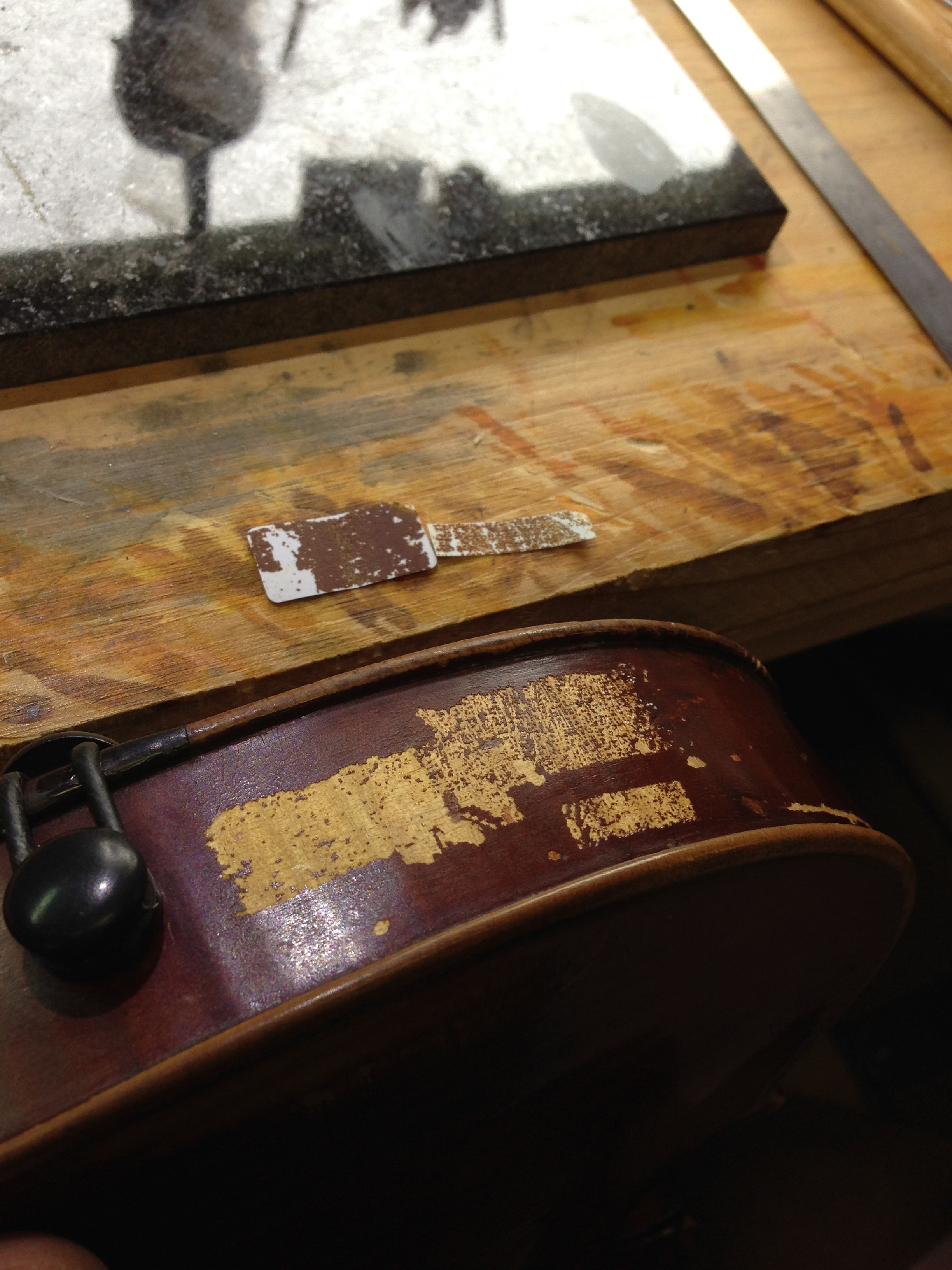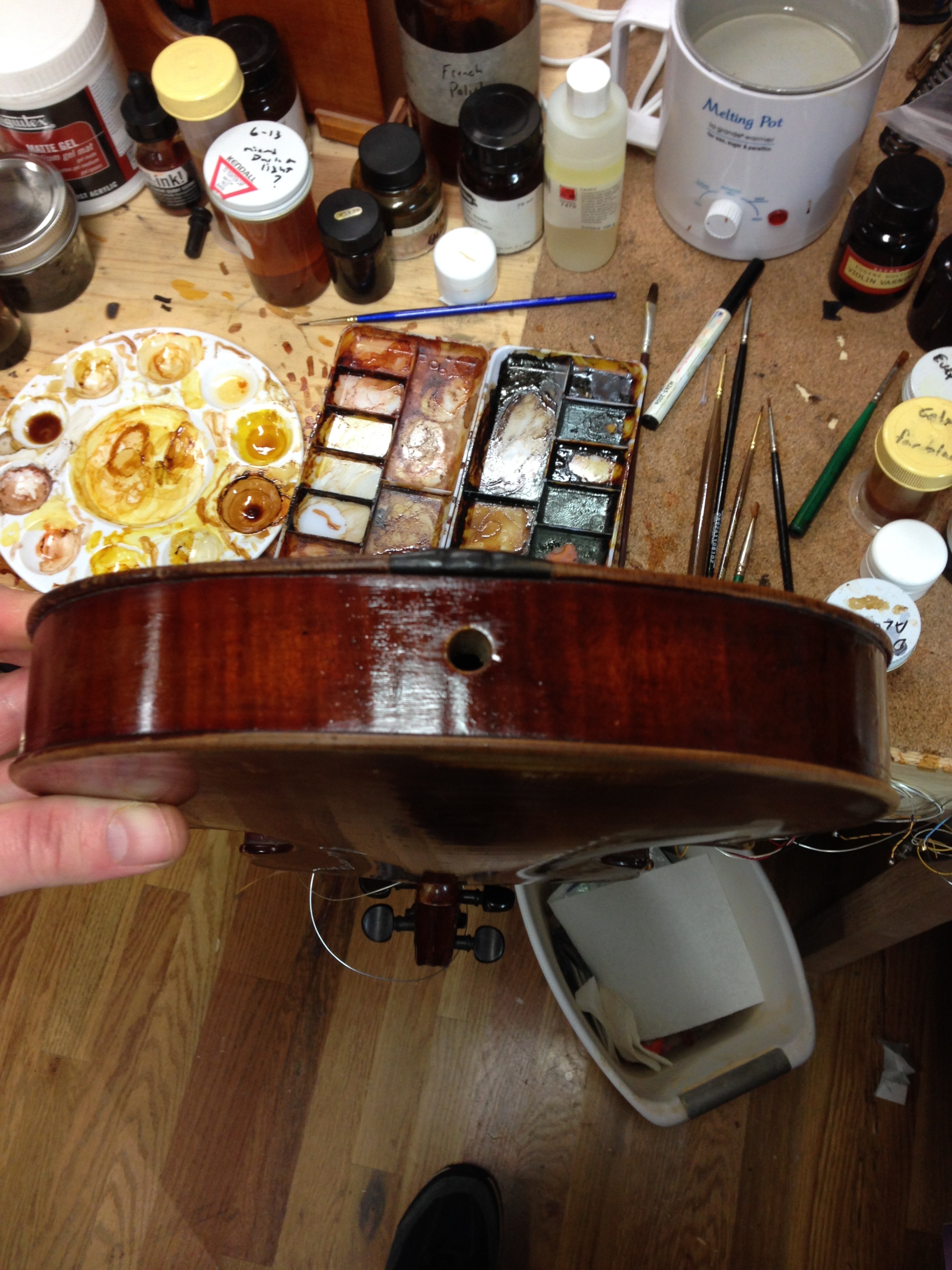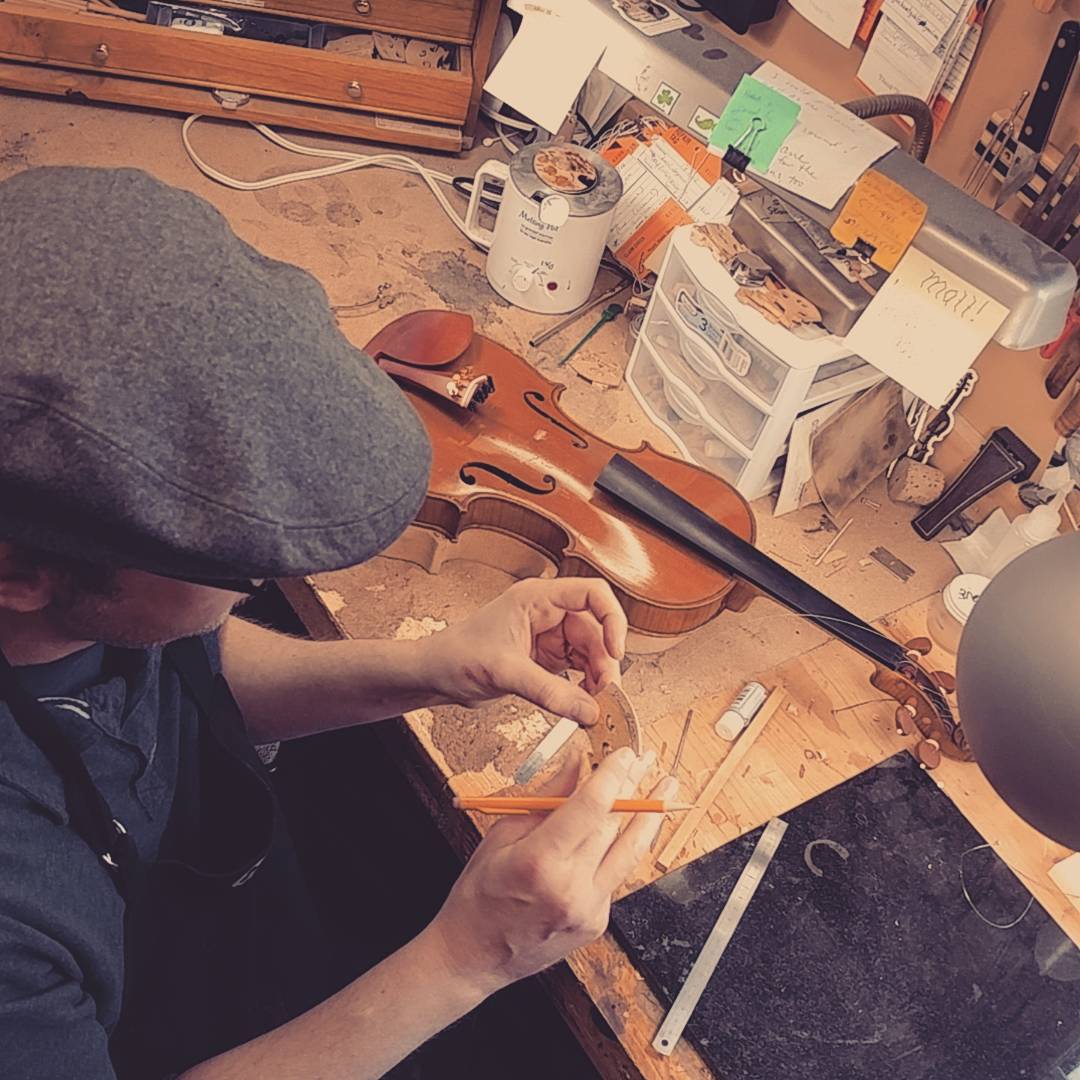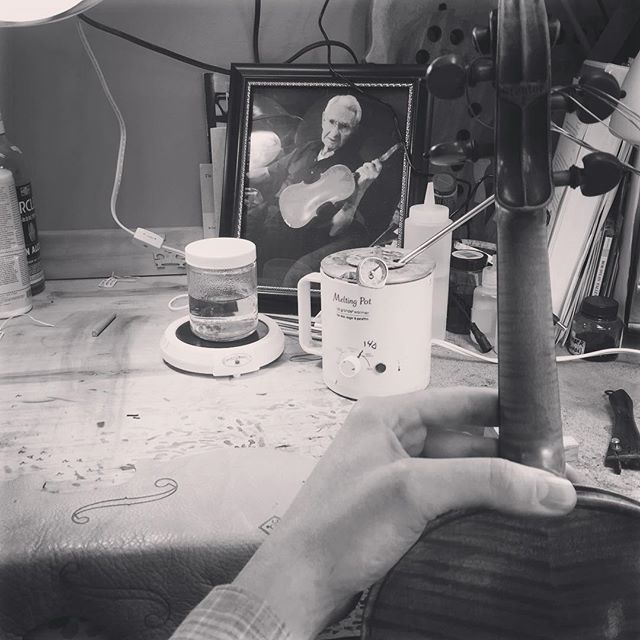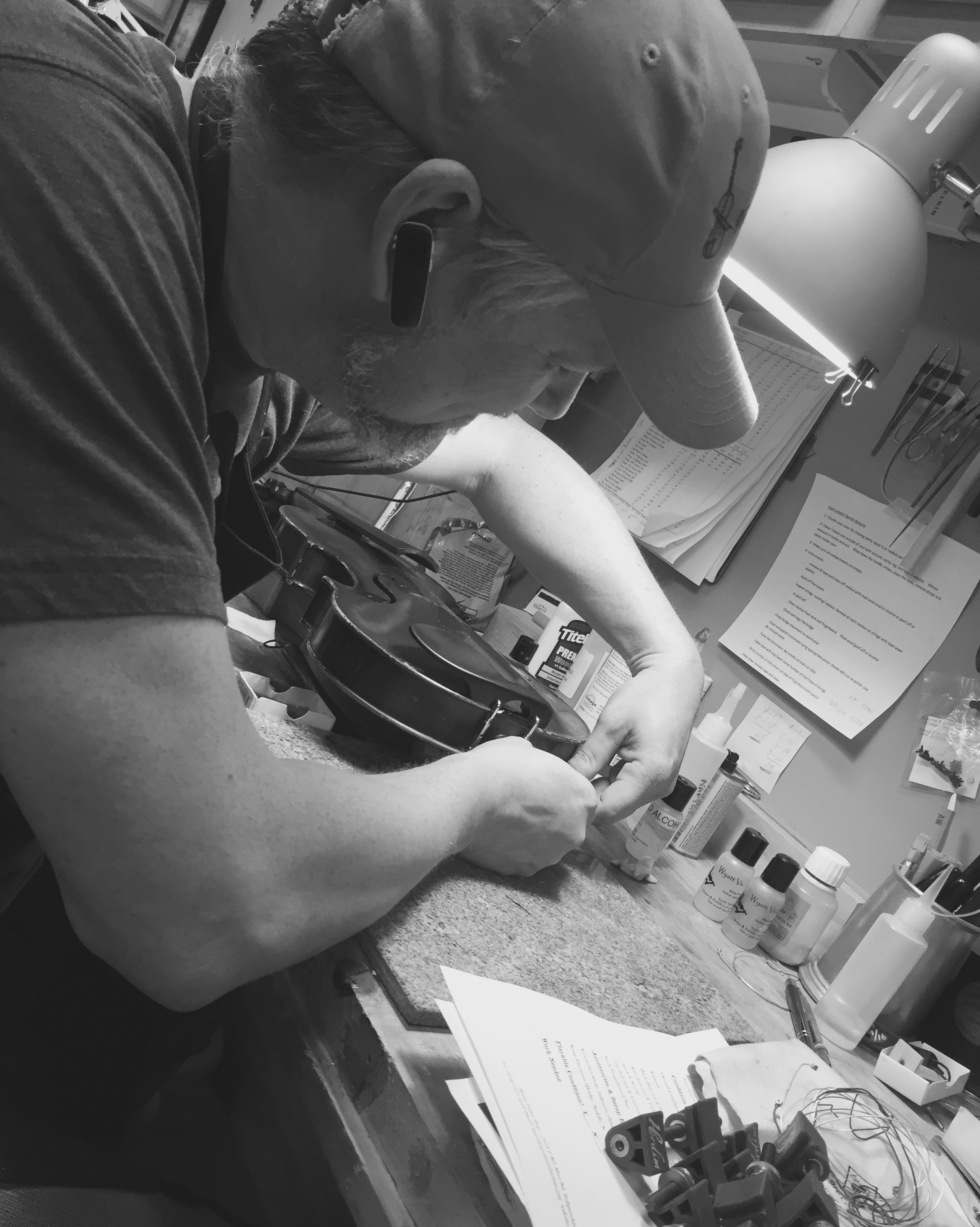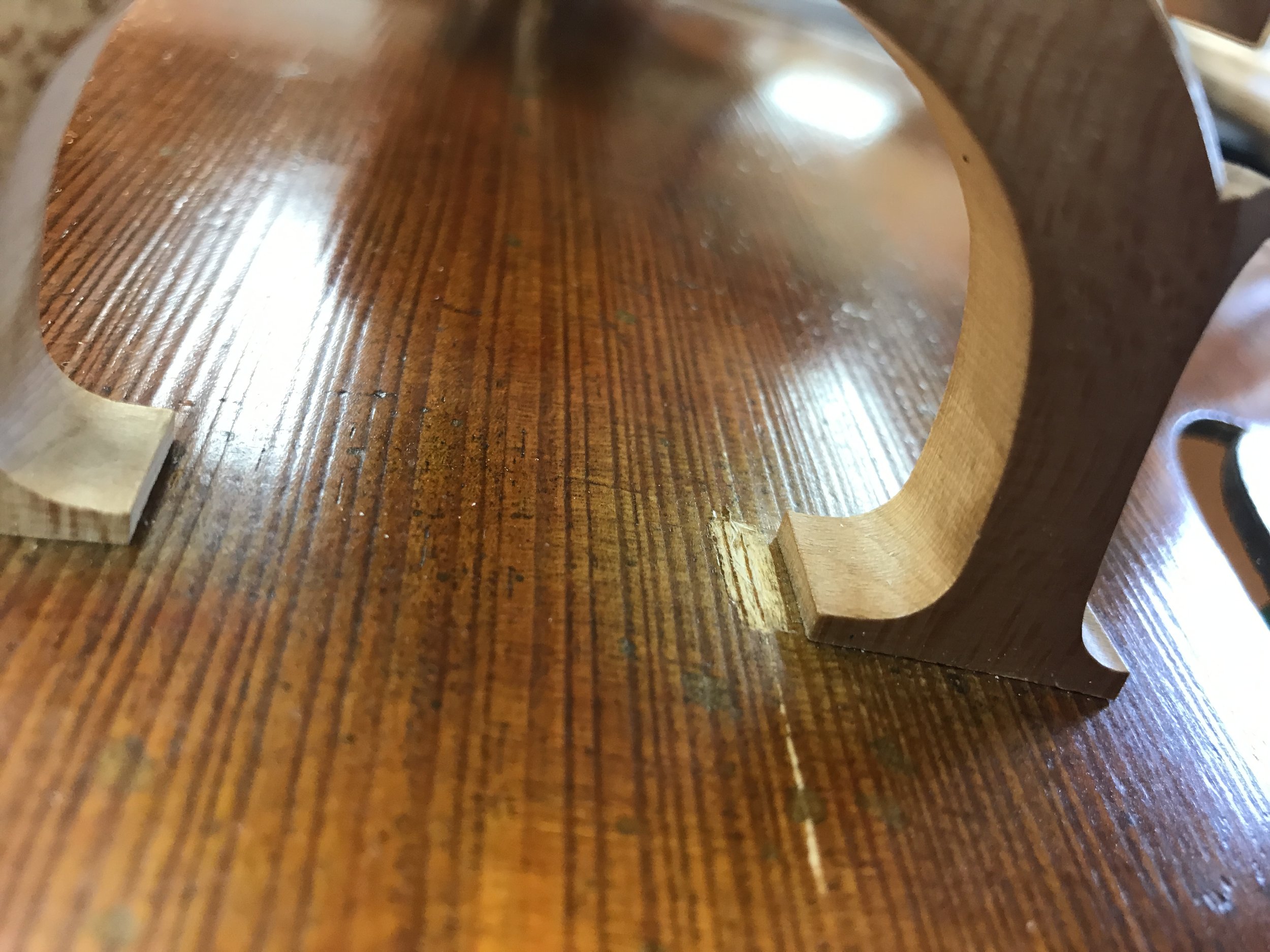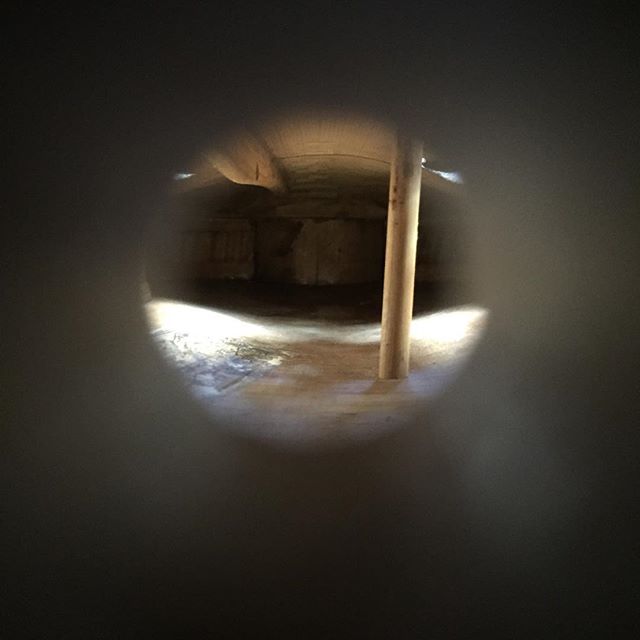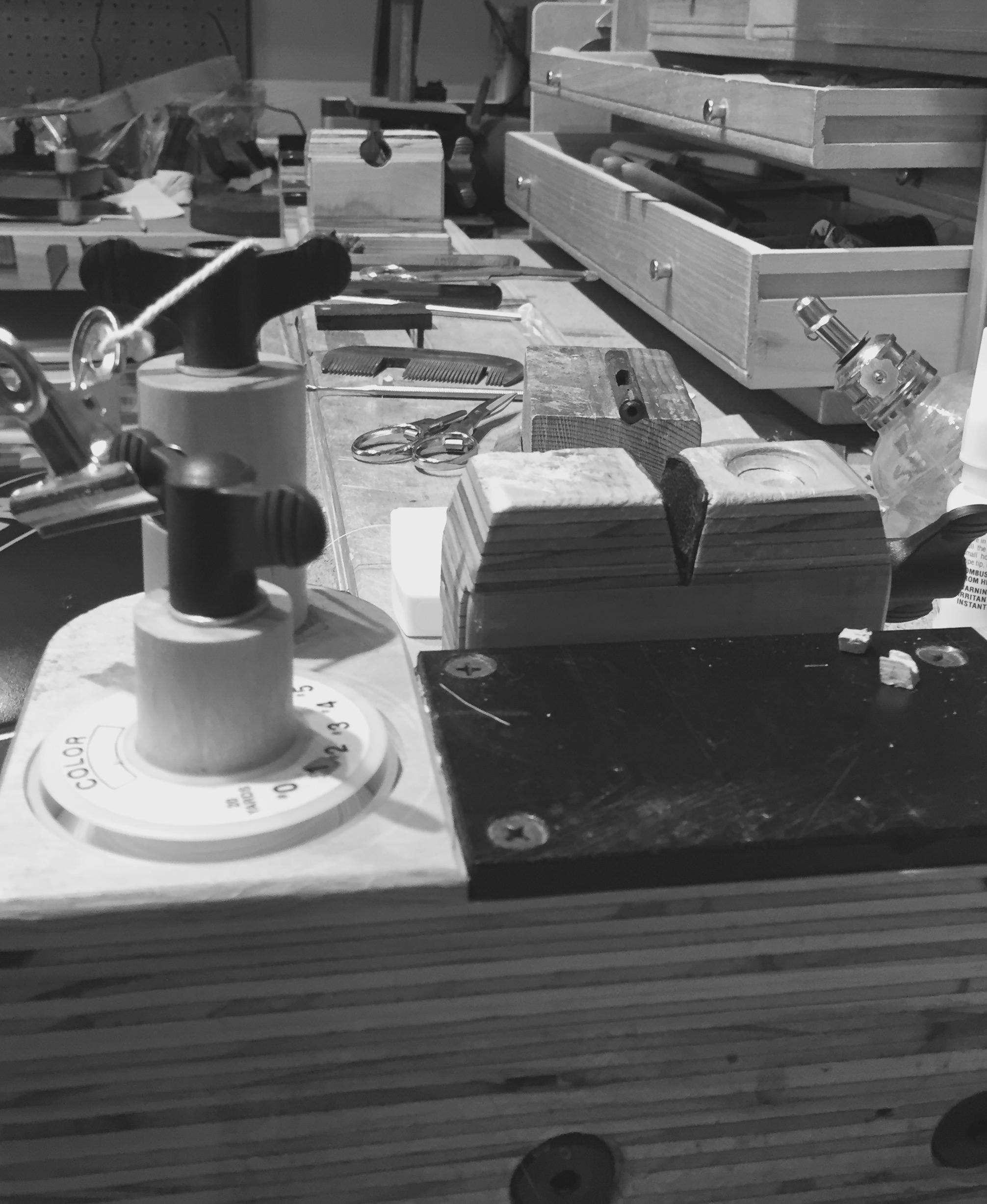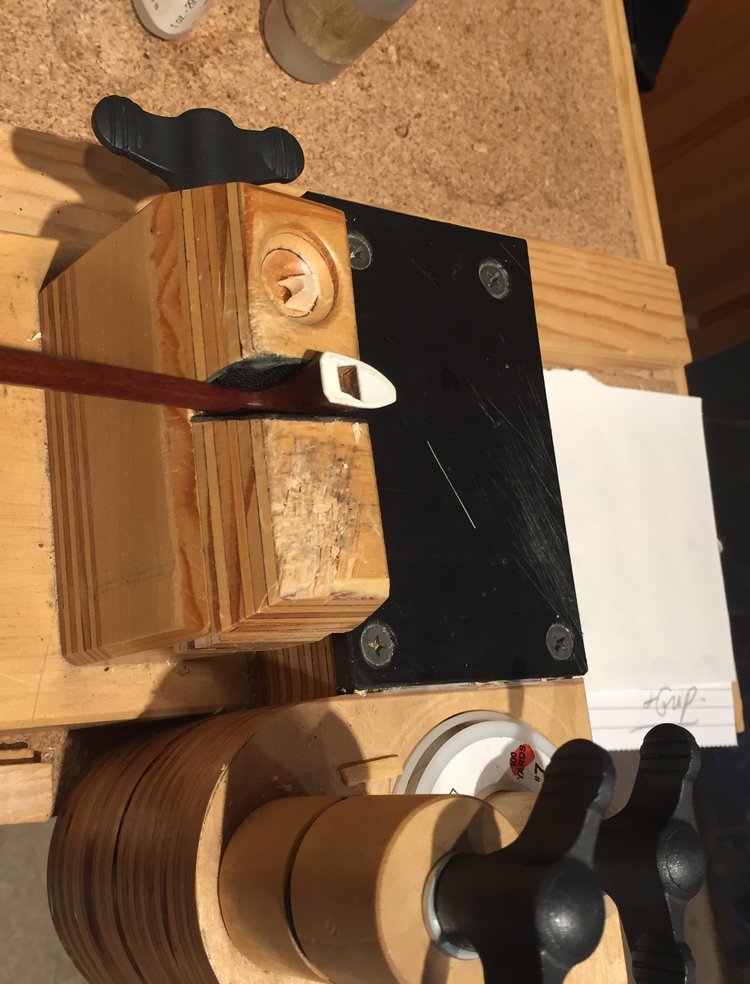Repair & Restoration
Book an Appointment:
Book an Instrument Repair or a Bow Rehair:
At the Wyatt Violin Shop we give accurate estimates of repair costs and always stick to that estimate. We will never drop a "surprise " on you when you pick up your instrument. Many problems may not be noticeable to the untrained eye, so bring in your instrument for an expert evaluation and estimate. Our goal is to bring out the unique and best personality in each instrument. Individual estimates are necessary on any varnish touch up, crack repairs, neck grafts, and repairs requiring the instrument to be opened. (Artistic restorations on musical instruments are subject to the interpretation of the craftsman and as such cannot be offered with a guarantee of specific results regarding varnish color or tonal characteristics.)
Bow Rehairing & Repair
Please contact us before mailing your bow in for repair or rehair. Shipping charges may apply. Student bow rehairs are high quality horse hair and include reconditioning and cleaning. Professional rehairs include the highest grade horse hair available as well as cleaning and reconditioning. *Includes professional Cleaning & French polish (if necessary) and free evaluation.
Violin $70
Viola $70
Cello $80
Bass $90
(discounts applied for student and school instruemnts)
Please inquire about discounts for multiple bows or special pricing for school Orchestra programs. Also, enquire about our Bow Rehair Program!
WVS Protégé model Bows are discounted heavily with our “Bow Swap” program. Call the shop for details or learn more HERE
"I was surprised today when I received the three fiddle bows. Man that was sure quick. I almost thought you had sent them back without repair for some reason or another until I opened the mailing tube. Your work is excellent and doing business with you is a pleasure. I will distribute your enclosed business cards to my brothers and fiddle friends in case they need quick professional service for their instruments. I was scared doing business over distance but, you have seriously laid that to rest." Thanks again for your quick response and professionalism." ~ From New Mexico, Vick Jenkins
Bow Rehair Tips
There is no set time frame for rehairing your bow. Some people can go for years between rehairs while others seem to need a rehair every six weeks. Hair does break and stretch, and eventually stops engaging the strings. Sometimes you can tell if it’s time for a rehair by simply looking, other times it’s a matter of feel.
Here are some guidelines to assist in deciding to get a rehair:
1. Too many broken hairs on one side puts uneven tension on the stick and will eventually pull the stick to one side. Straightening the stick requires heating, which always involves some level of risk, even in the most experienced hands. It is always best to avoid this situation if you can by getting a rehair before it’s a problem.
2. In climates with markedly contrasting seasons, it’s quite common to rehair bows in the spring and fall due to changes in humidity. Hair that’s the right length for the dry season can be too long to even reach playing tension when the rains come. Of greater danger to the bow, though, is hair that’s too short for the dry season, which can easily snap the head off a bow. How can you tell if humidity is a potential threat? If the skin is dry on the back of your hands, check your bow. If you can’t loosen it enough to take the tension off the stick, get a rehair.
3. If the hair gets too dirty (or smells suspiciously of peanut butter…) just get it rehaired.
4. Sometimes it’s a subjective feeling that sneaks up gradually—a feeling that the hair isn’t engaging the strings the way you remember it, or a feeling that you want to keep adding rosin. Ironically, too much rosin can have the opposite of the desired effect. Before deciding that an otherwise “full head of hair” is ready for replacement, try removing some rosin with a soft, clean, dry cloth. If that doesn’t work, and it’s been a while since your last visit to the violin shop, get a rehair.
Occasionally after a new rehair something just doesn’t seem right. Sometimes it’s perception, sometimes there’s something wrong. If you’ve been playing on too-long hair for a long time, you’ll have become accustomed to the frog sitting farther back on the stick, which changes the way a bow feels or handles. Try getting used to the rehair for a while. If you know something’s wrong, first try taking it back to the shop that did the job, especially if you’ve been happy with its work in the past—the shop could be trying hair from a different supplier or training a new rehair person. It’s hard to correct problems without feedback from the client.

